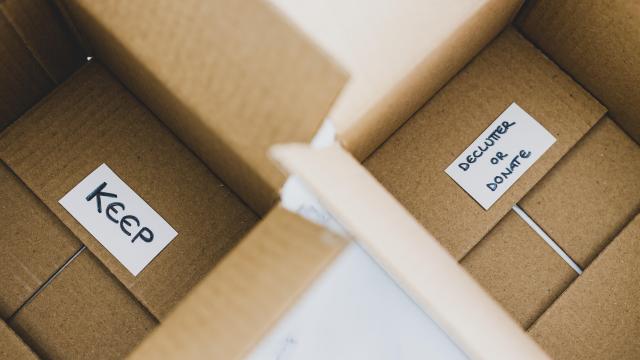You’re reminded of it every time you move: You have too much crap. It piles up in closets, under beds, in storage units, and inside garages. And dealing with all that clutter is bad for your mental health. The psychological weight of hoarder-level clutter and mess is easy to understand, but it can affect you even if you’re not navigating canyons of trash in your house.
Even modest levels of clutter can negatively impact your life for a number of reasons — because you’re often lugging old connections around, preventing you from letting go of past traumas; because you have to expend mental and emotional energy on things that are no longer vital to your everyday life; because you know, deep down, that someone is eventually going to have to deal with all of it after you die. But the practice of “Swedish death cleaning” can help — and you don’t have to wait until you’re near the end to benefit.
What is Swedish death cleaning?
Swedish Death Cleaning is a simple concept with powerful potential. It’s based on a Swedish concept called döstädning (literally “death cleaning”) that was expanded into a book by Margareta Magnusson (The Gentle Art of Swedish Death Cleaning). Magnusson was inspired to write the book after she lost her parents and her husband and had to wade through all the stuff they left behind.
The idea behind it is simple: At a certain point in your life, you should stop accumulating more stuff and start dealing with the stuff you’ve already accumulated so your loved ones won’t have to do it after you’re gone. Instead of leaving an enormous chore behind for the future, you can make it a thoughtful project now, while you’re still in control.
Technically, you’re supposed to engage in Swedish Death Cleaning later in life; Magnusson herself recommends age 65 as a good time to get started. But the need to simplify your existence doesn’t necessarily follow a fixed schedule, and you can benefit from the practice at any point in your life — because it’s all about taking control.
Don’t declutter — rethink your relationship with stuff
The key to Swedish death cleaning is that it’s not just a burst of decluttering and getting rid of old junk, but the imposition of a permanent new way of organising your life. It’s less about cleaning out the garage and more about how you want to approach acquiring and disposing of possessions going forward. The sense of being in charge of your life and having some say in how everything is dealt with — even after you’re gone — is empowering.
Here’s how to get started:
- Start with the easy stuff. Magnusson advises against tackling emotionally heavy items right away. Instead, get rid of obvious stuff like old clothes that no longer fit or that you never actually wear. Then move on to stuff that’s been hidden away in storage for so long you forgot you even own it. Slowly move on to more meaningful things.
- Take your time. The whole point is that you’re preparing for a future that hasn’t come yet — there’s no need to make this into an intense ordeal. Just getting into the habit of consciously taking stock of all the stuff you’ve gathered around you will have an impact on your emotional health.
- Consider options. One key to this is that you’re not just stuffing things into the garbage, you’re being thoughtful. Consider what can be donated, what can be gifted, what needs to be trashed, and what can be sold. There’s no rule that says you can’t make a profit from Swedish death cleaning. There’s also no reason to get rid of something if there’s a person in your life who would benefit from it, so keep your circle in the loop as you go through stuff.
- Go minimalist. The goal here is to leave behind as little as possible for others to deal with, so keep only what you absolutely need. That means the dishes and place settings you never use, shoes you never wear — it all goes. Keep only what you actually need.
- Don’t forget to declutter digitally. Part of the mess we leave behind for people is our digital footprint — social media accounts, online photos, email accounts, etc. You don’t necessarily have to get rid of these, especially if they bring a lot of positive energy into your life. But you should make sure other people will have the necessary information and logins to delete and manage those accounts after you’re gone.
- Consider who benefits. One of the key questions to ask yourself during this process is whether an object or document will make anyone aside from you happy. A memento you saved from a class trip, for example, probably only has significance to you — your kids, siblings, or partner won’t get anything from it. Things like that are prime candidates for a clean out — but only if you’re emotionally ready to part with them. One of Magnusson’s mantras is that objects don’t contain memories — you don’t need anything to remember a special moment. And if the object won’t improve anyone else’s life, there’s no point in making them deal with it.
The main thing to keep in mind when considering how Swedish death cleaning can improve your life at any time is that it isn’t about death, not really. It’s about control. It’s about deciding what the rest of your life (and the time that follows) it will look like. And it’s an act of kindness to everyone who has to deal with your mess, now or in the future — including yourself.

Leave a Reply
You must be logged in to post a comment.